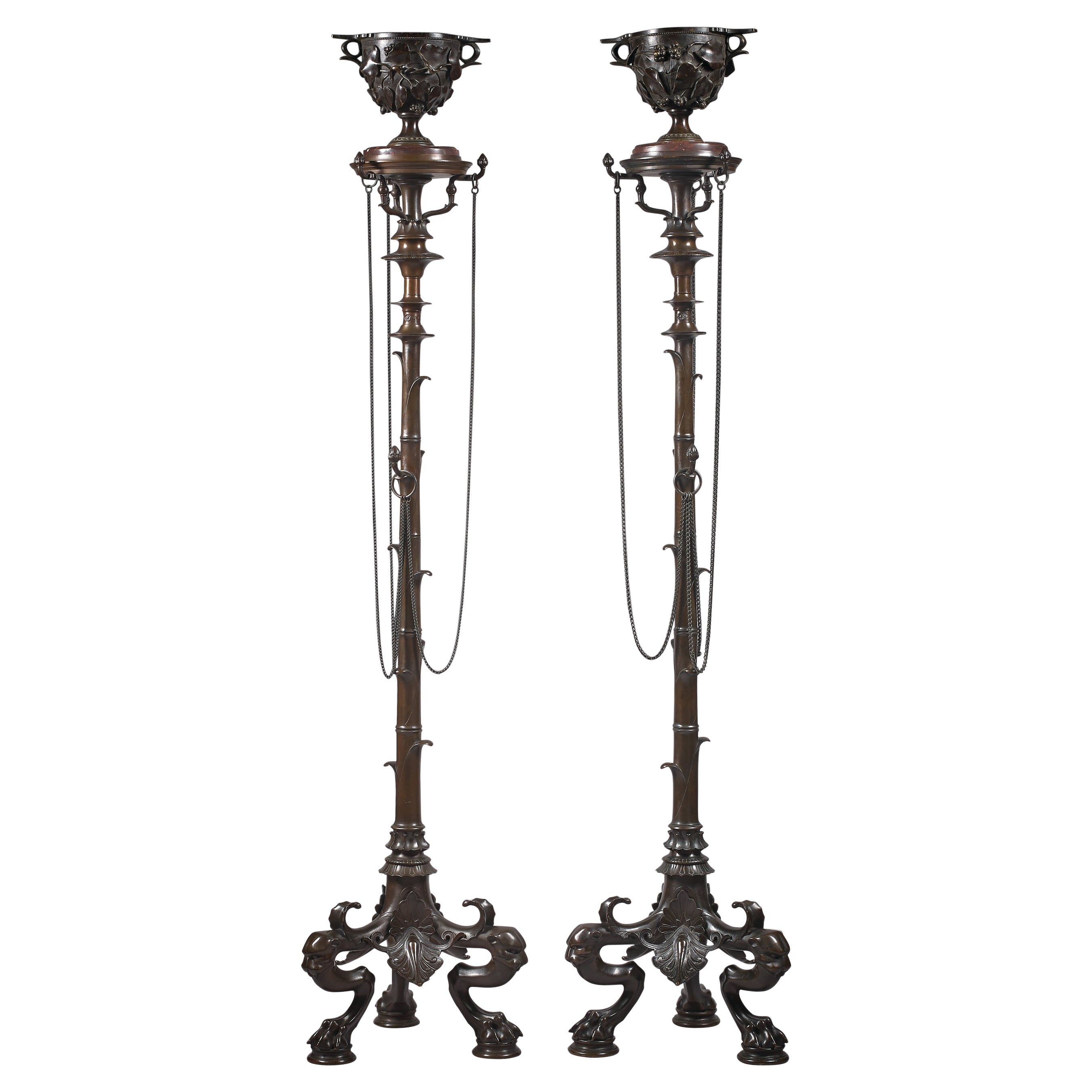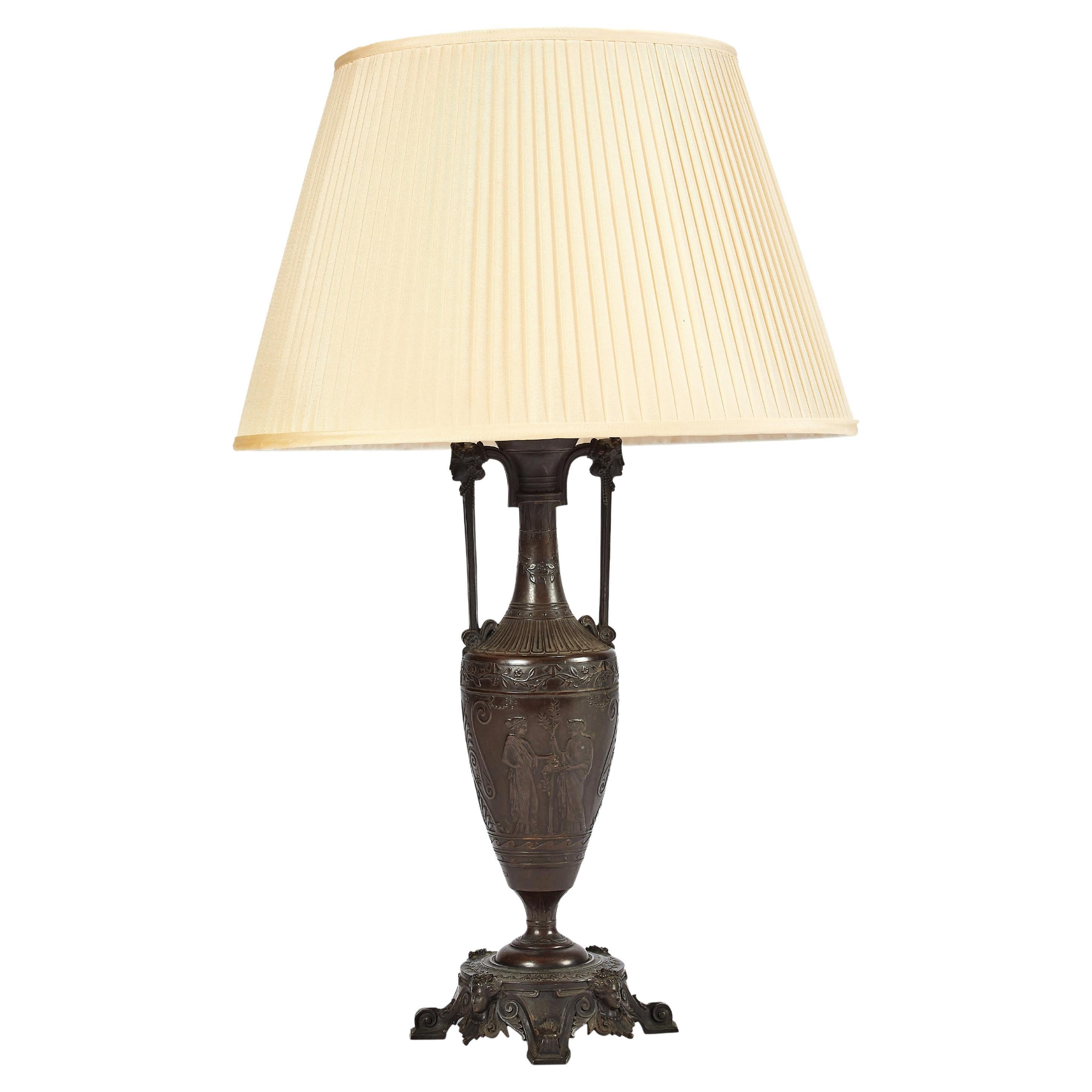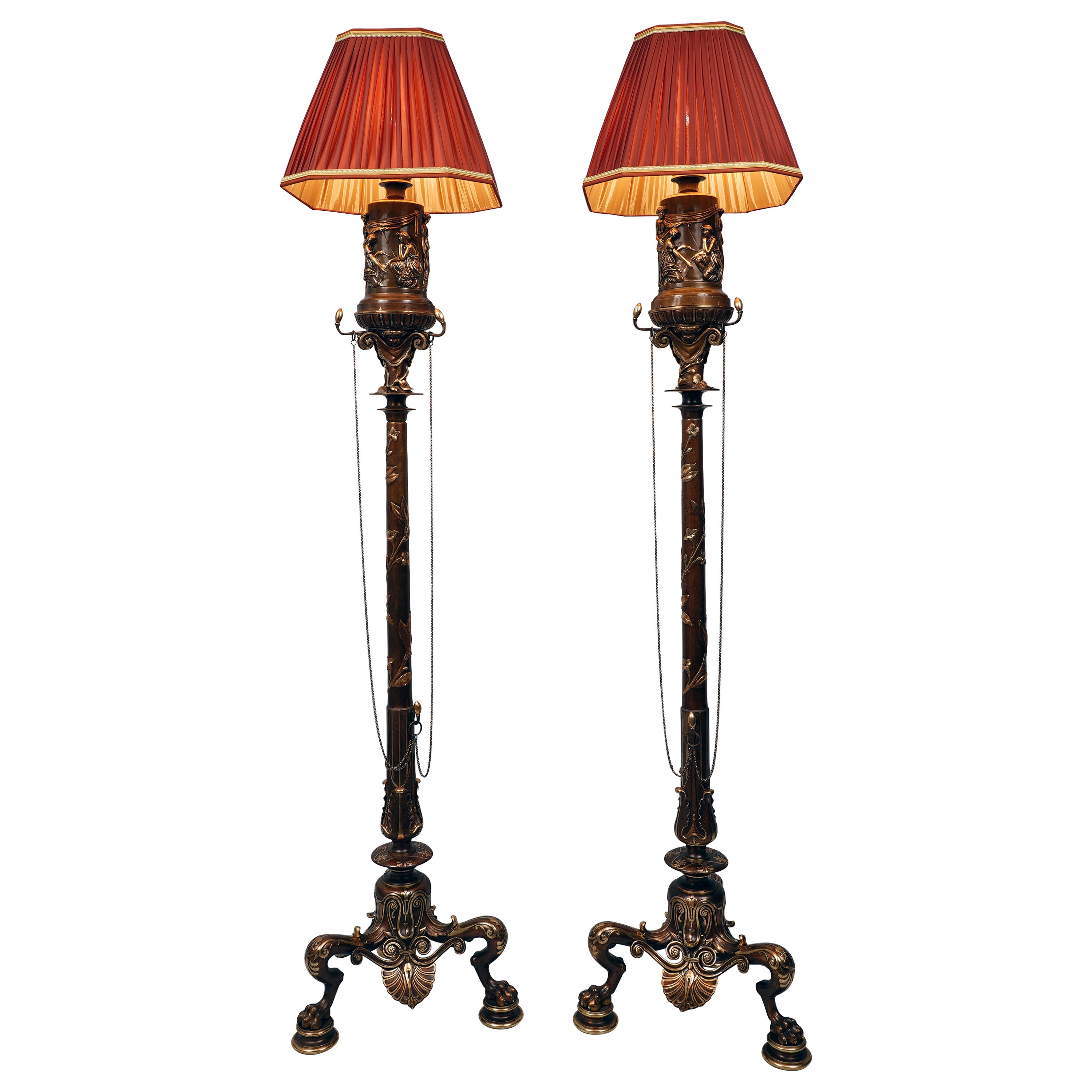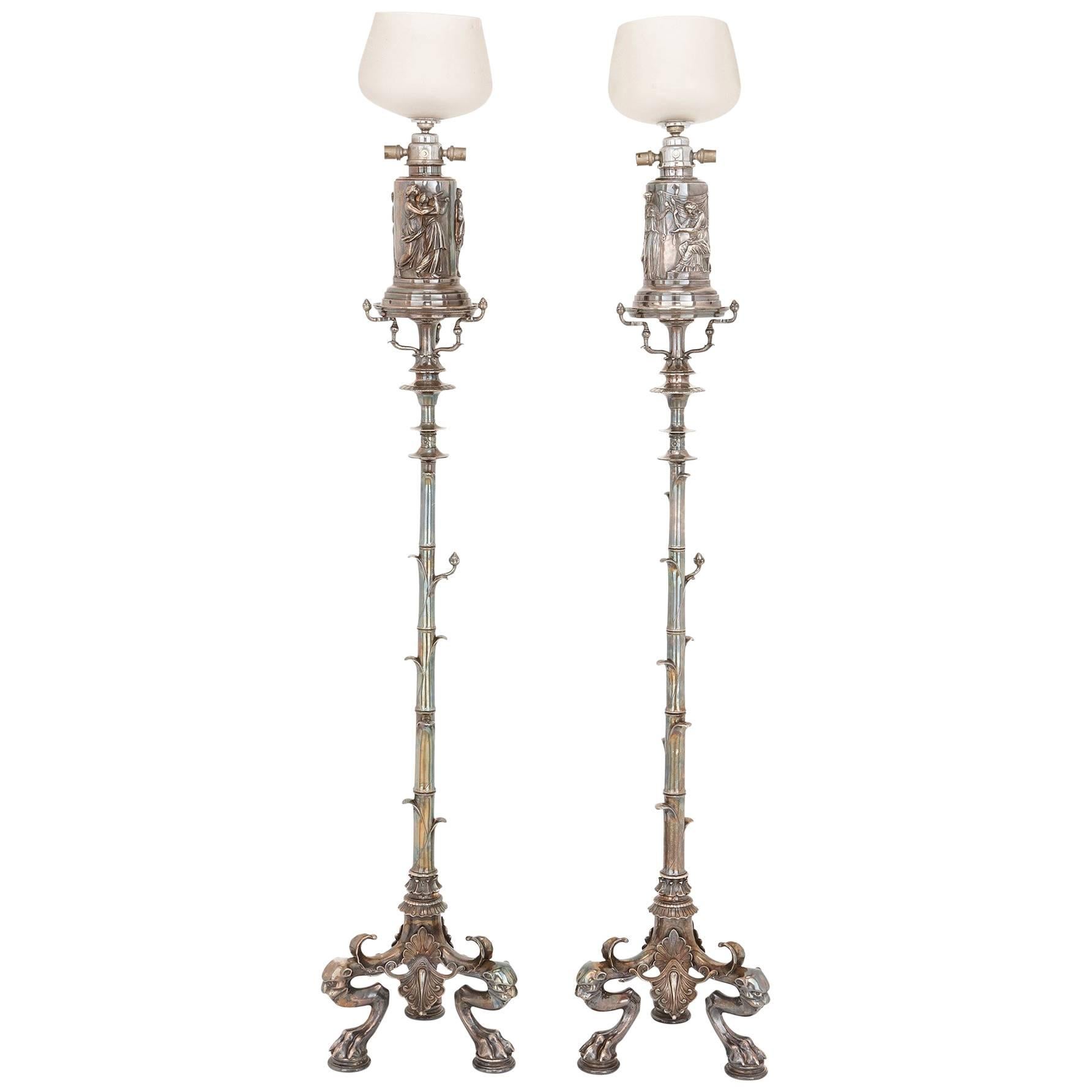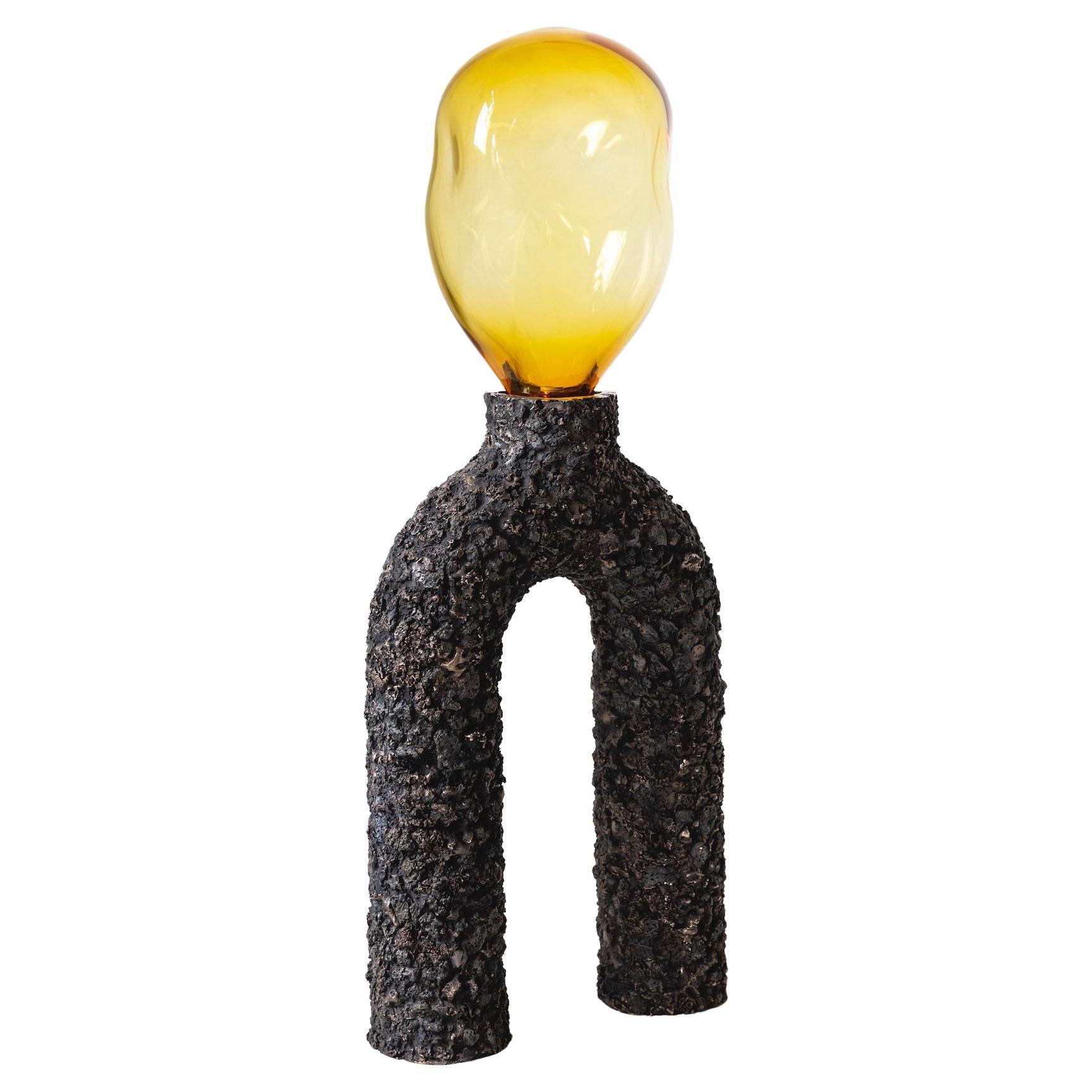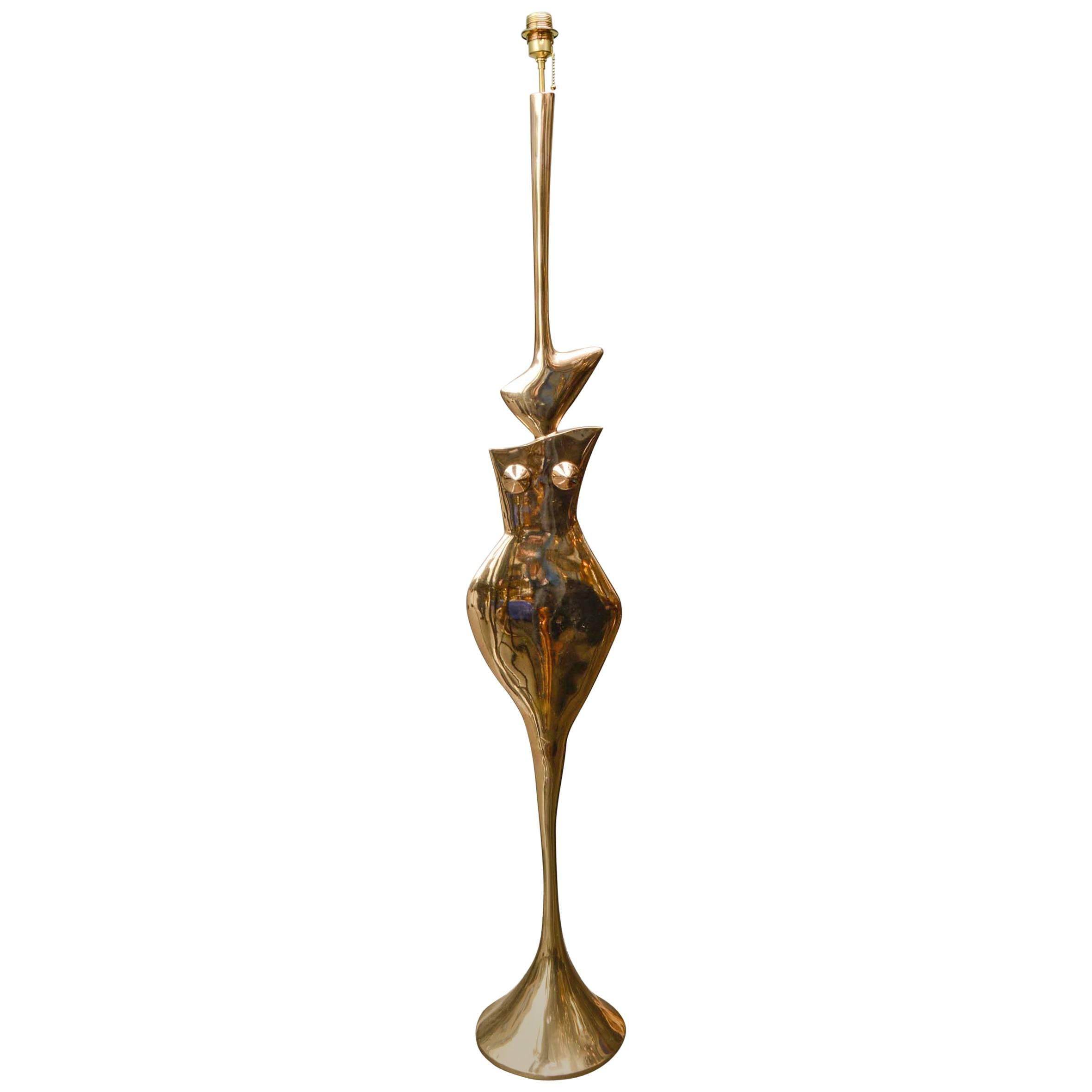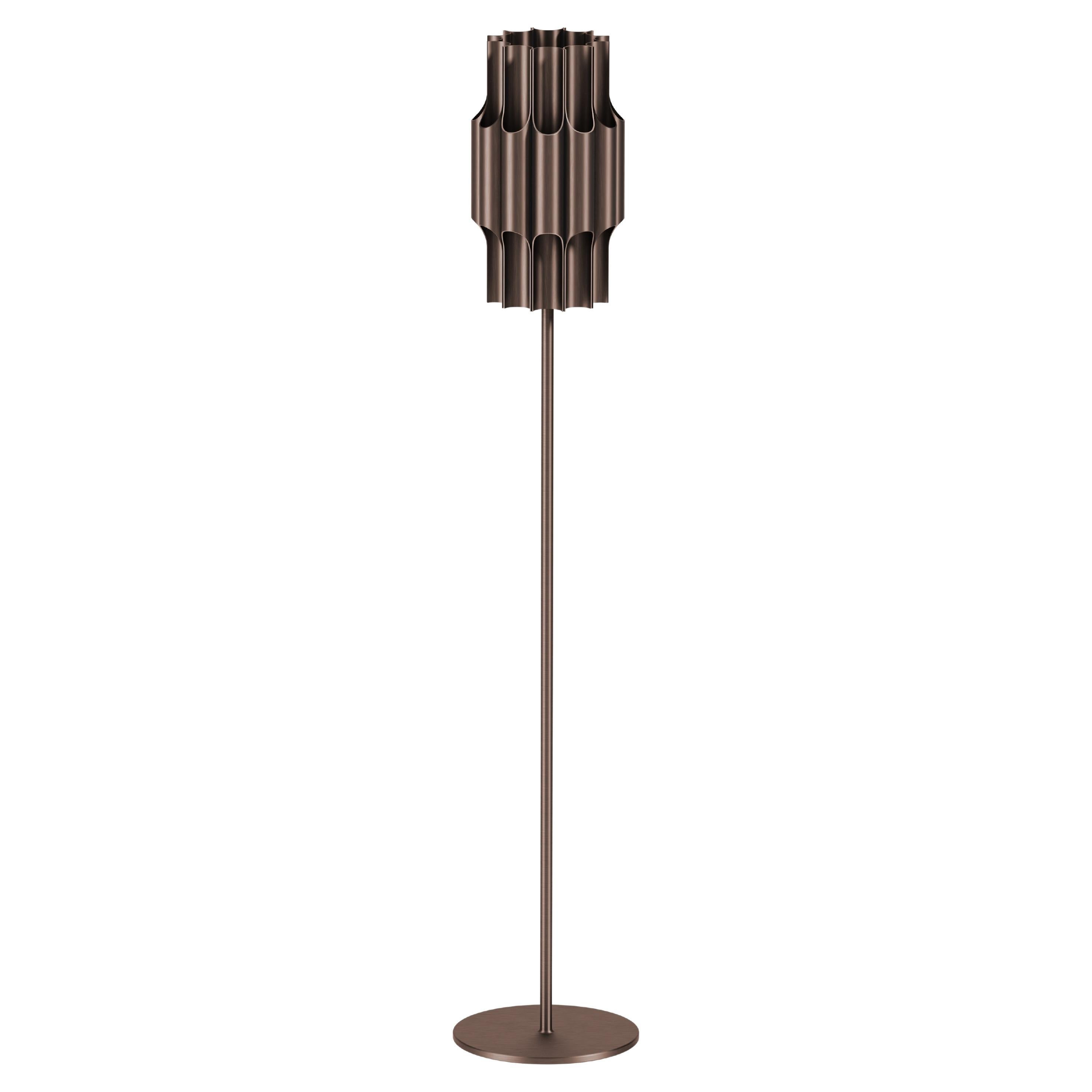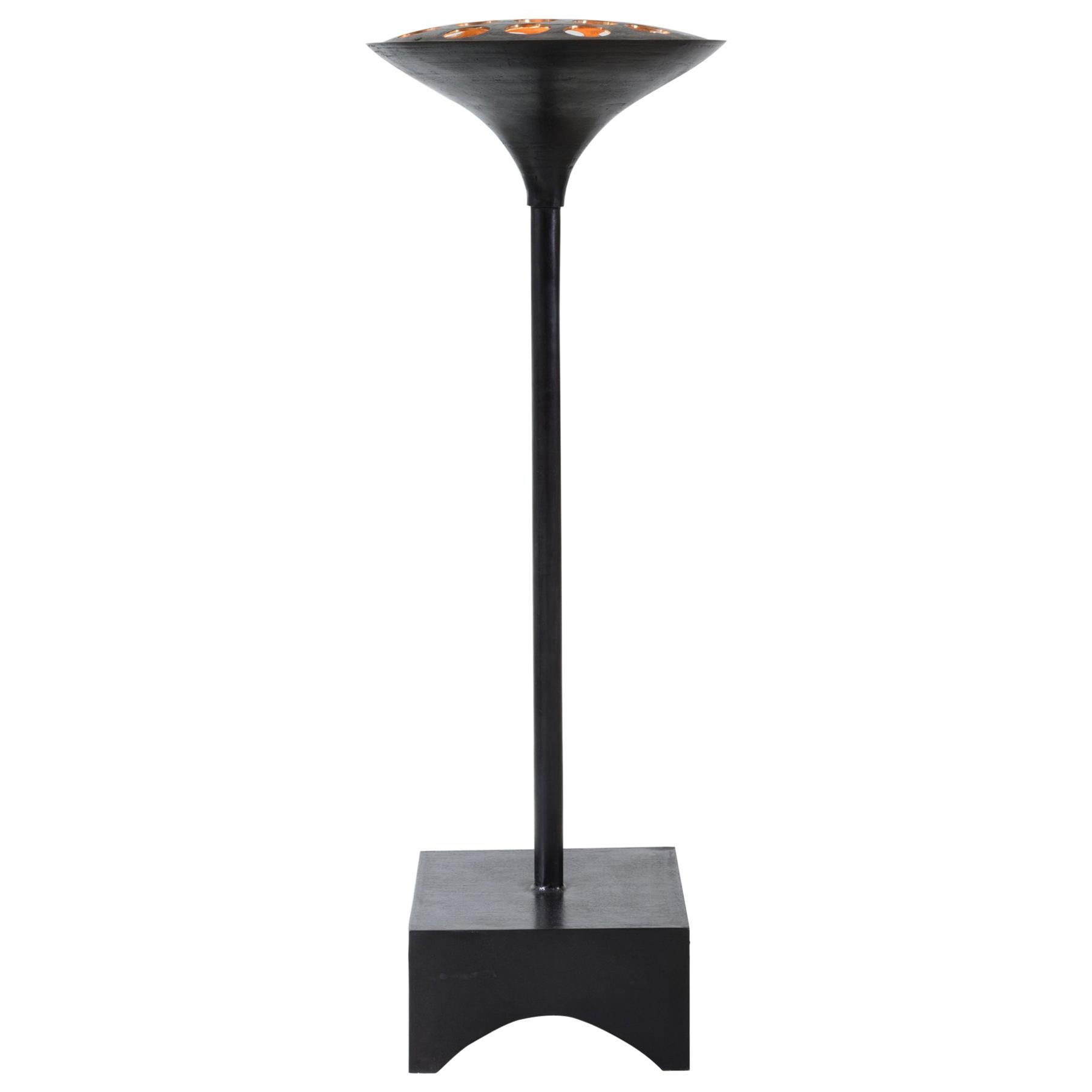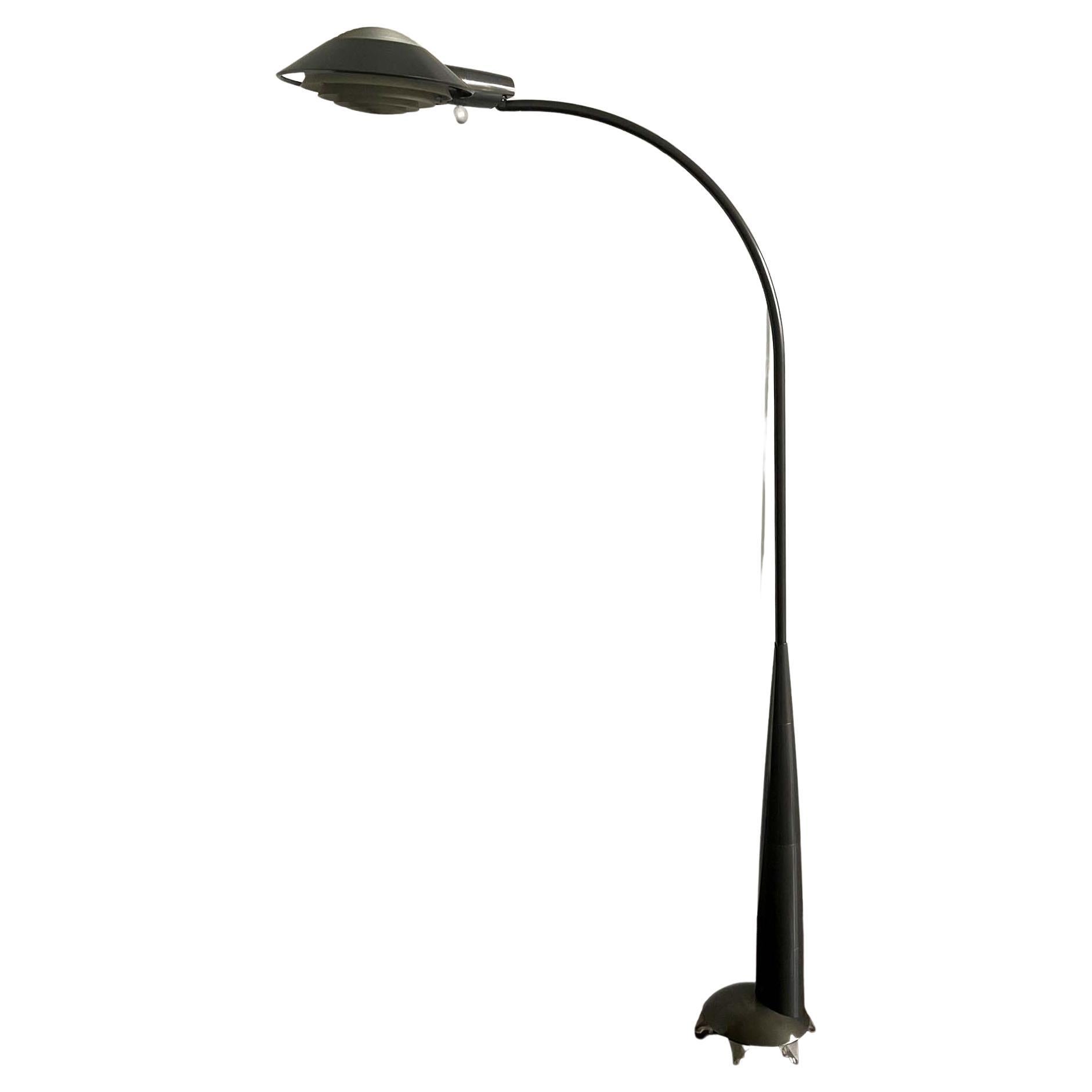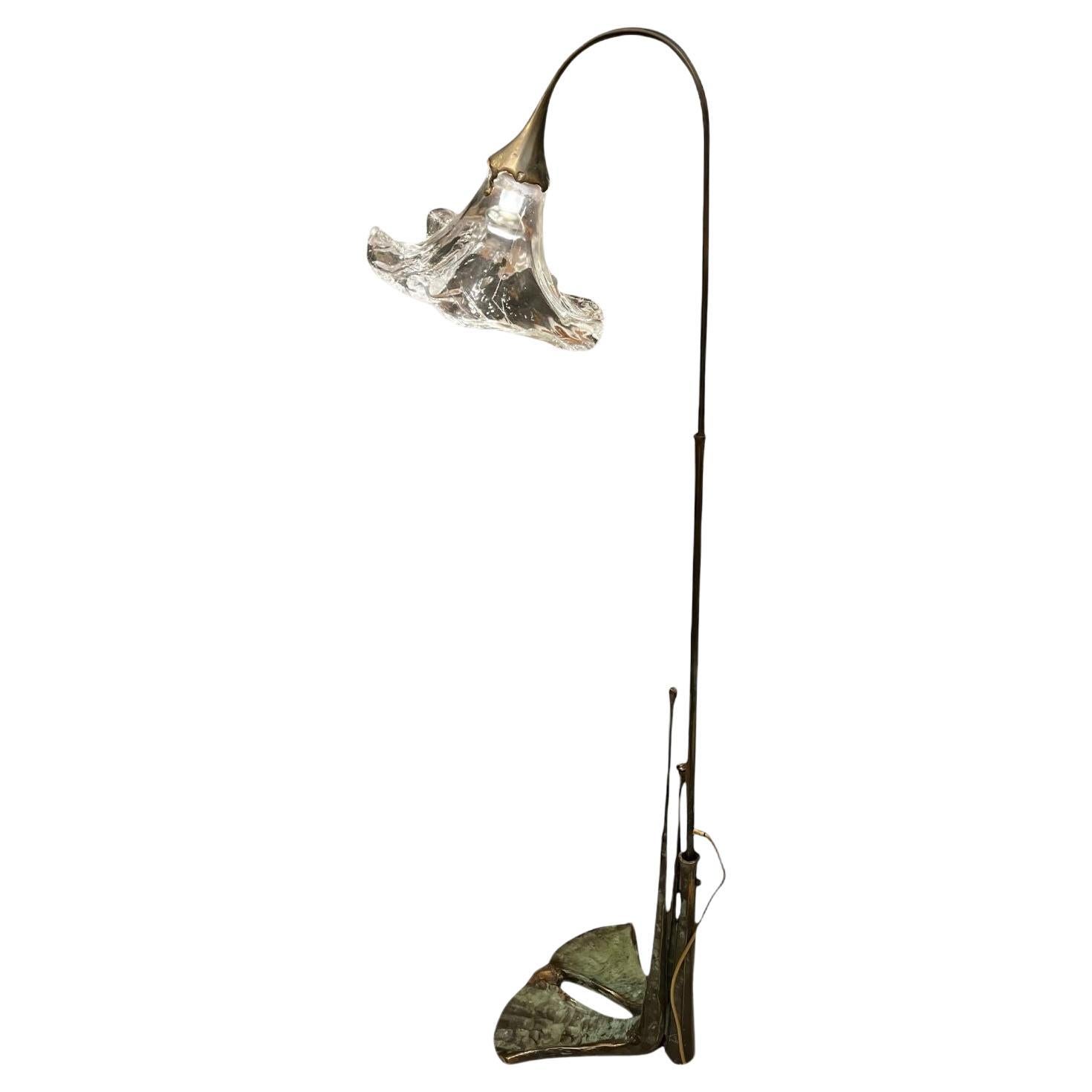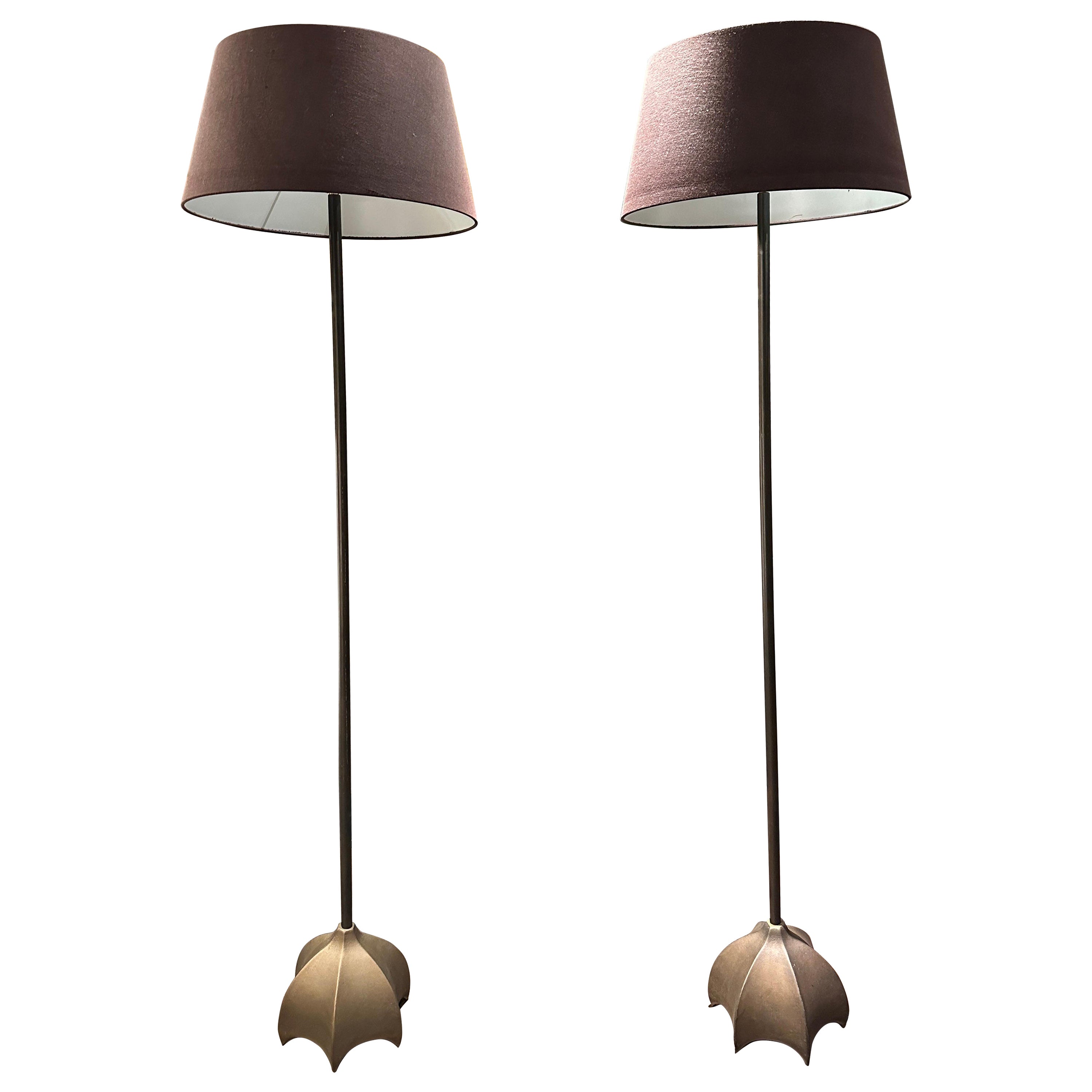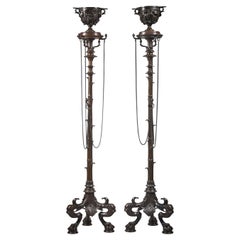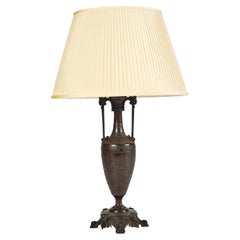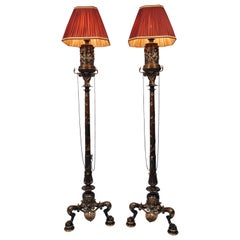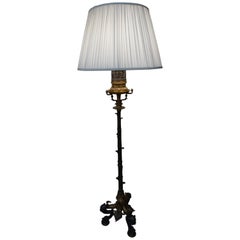
Important 1850s Bronze Floor Lamp by Henry Cahieux for Barbedienne
View Similar Items
1 of 10
Important 1850s Bronze Floor Lamp by Henry Cahieux for Barbedienne
About the Item
- Creator:
- Dimensions:Height: 24 in (60.96 cm)Diameter: 73 in (185.42 cm)
- Style:Classical Greek (In the Style Of)
- Materials and Techniques:
- Place of Origin:
- Period:
- Date of Manufacture:1855
- Condition:Wear consistent with age and use. New wiring and new silk lampshade. Original finish some wear on finish, please review images carefully for condition.
- Seller Location:Fairfax, VA
- Reference Number:1stDibs: LU913611229371
Authenticity Guarantee
In the unlikely event there’s an issue with an item’s authenticity, contact us within 1 year for a full refund. DetailsMoney-Back Guarantee
If your item is not as described, is damaged in transit, or does not arrive, contact us within 7 days for a full refund. Details24-Hour Cancellation
You have a 24-hour grace period in which to reconsider your purchase, with no questions asked.Vetted Professional Sellers
Our world-class sellers must adhere to strict standards for service and quality, maintaining the integrity of our listings.Price-Match Guarantee
If you find that a seller listed the same item for a lower price elsewhere, we’ll match it.Trusted Global Delivery
Our best-in-class carrier network provides specialized shipping options worldwide, including custom delivery.You May Also Like
Pair of "Bamboo" Stands attr. to H. Cahieux & F. Barbedienne France, circa 1855
By Henry Cahieux and Ferdinand Barbedienne
Located in PARIS, FR
A similar model presented at the 1855 Paris Universal Exhibition
Total height : 154 cm (60 5/8 in.) ; Width : 33 x 33 cm (13 x 13 in.)
Cup : height 17 cm (6 ¾ in.)
Beautiful pair of bronze stands also named Bamboo candelabra. Each rests on three claw feet adorned with lion heads and separated with palms. A bamboo shaped shaft arises from this tripod and is topped with three buds supporting a circular red griotte marble top on which stands a cup in the Ancient style decorated with ivy.
The sobriety of the decoration enhances the quality of the bronze cast and the patina shades. The small chains falling from the top animates this work of a sleek design.
The model :
The design of these stands, inspired from Ancient tripods, is a well-known model in Ferdinand Barbedienne’s production as it was reused many times by the bronze-caster. Designed by the head-decorator Henri Cahieux, this model was edited by the Barbedienne Company as soon as 1855, named Ancient candelabra lamp-holder h. 1m35 and was sold 440 francs. From 1875, these stands were commercialised under the name Bamboo candelabra, tripod, lamp-holder and were offered in three heights : 1m90, 1m70 and 1m35. This model of stand could then be found in all catalogues of the Barbedienne Company.
This pair of candelabras allows us to see how F. Barbedienne offered during decades a range of furniture from the designs of his decorator. This type of stand could be seen in different interior decorations of the Second Empire
A model similar to ours was presented by the Barbedienne Company at the 1855 Universal Exhibition. For this occasion Empress Eugénie bought it for her toilet at Saint-Cloud Castle. A watercolor by Fortuné de Fournier made in 1860 shows them, set on both sides of a cheval mirror made by the Fourdinois Company. (see photo attached)
This model pleased the Empress so much that she ordered two other pairs in 1858 for her boudoirs at Compiègne and Fontainebleau Palaces.
Otherwise similar stands took place in the Pompeiian house built in 1856 by the architect Alfred Normand (1822-1909) for Prince Napoléon. Several pictures and engravings of this house show us these candelabras used...
Category
Antique 1850s French Greek Revival Floor Lamps
Materials
Griotte Marble, Bronze
19th Century French Neo-Greek Classical Bronze Lamp by Henry Cahieux
By Henry Cahieux and Ferdinand Barbedienne
Located in Henley-on-Thames, Oxfordshire
A 19th century French Neo-Greek Classical bronze lamp by Henry Cahieux probably cast by the Barbedienne foundry, Paris and inscribed Hy Cahieux, 21.5cm...
Category
Antique Late 19th Century French Classical Greek Table Lamps
Materials
Bronze
$1,527 Sale Price
30% Off
Pair of Neo-Greek Bronze Floor Lamps by F. Barbedienne, France, circa 1860
By Ferdinand Barbedienne
Located in PARIS, FR
Height without/with lampshade : 168/185 cm (66,1 / 72,8 in.) ; Base : 43 x 43 cm (16,9 x 16,9 in.)
Beautiful pair of neo-Greek floor lamps in bronze with double patina, composed of cylindrical lamps, decorated on the body with a rotating frieze representing women dressed in the Antique style weaving and spinning, surmounted by lampshades with cut sides in red pleated silk with golden braid.
They are placed on pedestals from which hang thin chains attached to the slender shaft decorated with stylized leaves and flowers, resting on a tripod base decorated with large palmettes and ending in lion’s paws.
The stylistic repertoire used here, composed in particular of palmettes, masks, and nymphs, evokes Greek Antiquity, as does the reuse of forms of furniture and objects such as tripods and antique vases.
The rediscovery in the 18th century of the archaeological remains of Pompeii and Herculaneum allowed artists of all disciplines to draw inspiration from Antiquity while reinterpreting it.
This trend did not fade and, in the 19th century, many personalities fitted out their interiors with neo-Greek furniture, as was the case for the Maison Pompéienne built in 1856 by the architect Alfred Normand (1822-1909) for Prince Napoleon, or Empress Eugénie who bought from the Maison Barbedienne pedestals inspired by antique tripods.
Related work :
Pedestal model presented by Maison Barbedienne at the Universal Exhibition in Paris in 1855. On this occasion, Empress Eugénie bought it for her bathroom in the Château de Saint-Cloud. This model pleased the Empress so much that she ordered two other pairs in 1858 for her boudoir in the palaces of Compiègne and Fontainebleau. (see photo attached)
Photo showing a floor lamp similar to ours in Empress Eugénie’s bedroom in the Château de Compiègne (Oise), in Architecture intérieure et Décoration en France des...
Category
Antique 1860s French Greek Revival Floor Lamps
Materials
Bronze
Pair of Silvered Bronze Large Antique Floor Lamps, Attributed to Barbedienne
By Ferdinand Barbedienne
Located in London, GB
These beautiful antique French floor lamps are cast from delicate silvered bronze, and are decorated in the refined neoclassical style. The p...
Category
Antique 19th Century French Neoclassical Floor Lamps
Materials
Bronze
$16,361 Sale Price / set
20% Off
Bronze Floor Lamp by Tipstudio
Located in Geneve, CH
Bronze floor lamp by Tipstudio
Edition of 8+1 AP
Dimensions: Ø80 x 34 cm
Materials: Slags, Statuario Bronze, Hand Blown Amber Crystal
Weight: 35 kg
Tipstudio, Imma Matera and...
Category
2010s Italian Modern Floor Lamps
Materials
Crystal, Bronze
$6,813 / item
Bronze Floor Lamp by L Armanelli
Located in Bois-Colombes, FR
Rare floor lamp by L Armanelli.
Category
Vintage 1970s Italian Floor Lamps
Materials
Bronze
Recently Viewed
View AllMore Ways To Browse
Vintage Halogen Lamp
Midcentury Reading Light
Floor Lamps 1930s
Black Iron Floor Lamps
Floor Lamp Paper
Hand Blown Floor Lamp
Vintage White Glass Floor Lamps
Tall Modern Floor Lamps
Small Shade Floor Lamp
Spotlight Lamps
Tripod Floor Lamp Vintage
Arc Light
Mid Century Floor Lamp Diffuser
Balance Floor Lamp
Modern Floor Lamp With Marble Base
Italian Cast Iron
Washi Paper Lamp
Cast Iron Base Lamp
